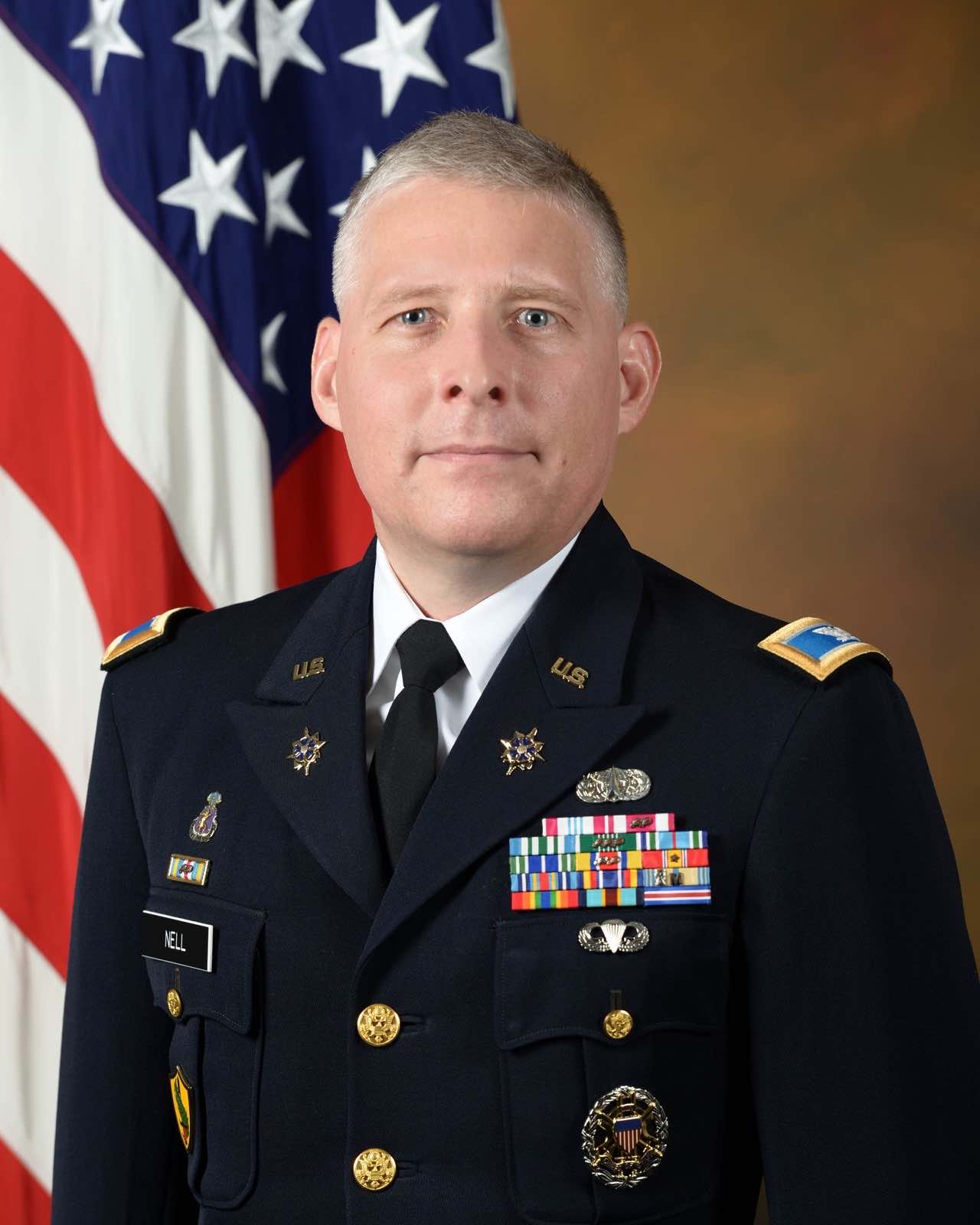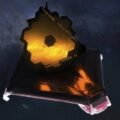Intelligence Officials Say U.S. Has Retrieved Craft of Non-Human Origin
A former intelligence official turned whistleblower has given Congress and the Intelligence Community Inspector General extensive classified information about deeply covert programs that he says possess retrieved intact and partially intact craft of non-human origin.
The information, he says, has been illegally withheld from Congress, and he filed a complaint alleging that he suffered illegal retaliation for his confidential disclosures, reported here for the first time.
Other intelligence officials, both active and retired, with knowledge of these programs through their work in various agencies, have independently provided similar, corroborating information, both on and off the record.
The whistleblower, David Charles Grusch, 36, a decorated former combat officer in Afghanistan, is a veteran of the National Geospatial-Intelligence Agency (NGA) and the National Reconnaissance Office (NRO). He served as the reconnaissance office’s representative to the Unidentified Aerial Phenomena Task Force from 2019-2021. From late 2021 to July 2022, he was the NGA’s co-lead for UAP analysis and its representative to the task force.


The task force was established to investigate what were once called “unidentified flying objects,” or UFOs, and are now officially called “unidentified anomalous phenomena,” or UAP. The task force was led by the Department of the Navy under the Office of the Under Secretary of Defense for Intelligence and Security. It has since been reorganized and expanded into the All-Domain Anomaly Resolution Office to include investigations of objects operating underwater.
Grusch said the recoveries of partial fragments through and up to intact vehicles have been made for decades through the present day by the government, its allies, and defense contractors. Analysis has determined that the objects retrieved are “of exotic origin (non-human intelligence, whether extraterrestrial or unknown origin) based on the vehicle morphologies and material science testing and the possession of unique atomic arrangements and radiological signatures,” he said.
In filing his complaint, Grusch is represented by a lawyer who served as the original Intelligence Community Inspector General (ICIG).
“We are not talking about prosaic origins or identities,” Grusch said, referencing information he provided Congress and the current ICIG. “The material includes intact and partially intact vehicles.”
In accordance with protocols, Grusch provided the Defense Office of Prepublication and Security Review at the Department of Defense with the information he intended to disclose to us. His on-the-record statements were all “cleared for open publication” on April 4 and 6, 2023, in documents provided to us.
Grusch’s disclosures, and those of non-public witnesses, under new protective provisions of the latest defense appropriations bill, signal a growing determination by some in the government to unravel a colossal enigma with national security implications that has bedeviled the military and tantalized the public going back to World War II and beyond. For many decades, the Air Force carried out a disinformation campaign to discredit reported sightings of unexplained objects. Now, with two public hearings and many classified briefings under its belt, Congress is pressing for answers.
Karl E. Nell, a recently retired Army Colonel and current aerospace executive who was the Army’s liaison for the UAP Task Force from 2021 to 2022 and worked with Grusch there, characterizes Grusch as “beyond reproach.”


Christopher Mellon, who spent nearly twenty years in the U.S. Intelligence Community and served as the Deputy Assistant Secretary of Defense for Intelligence, has worked with Congress for years on unidentified aerial phenomena.
“A number of well-placed current and former officials have shared detailed information with me regarding this alleged program, including insights into the history, governing documents and the location where a craft was allegedly abandoned and recovered,” Mellon said. “However, it is a delicate matter getting this potentially explosive information into the right hands for validation. This is made harder by the fact that, rightly or wrongly, a number of potential sources do not trust the leadership of the All-Domain Anomaly Resolution Office established by Congress.”
But some insiders are now willing to take the risk of coming forward for the first time with knowledge of these recovery programs.
Jonathan Grey is a generational officer of the United States Intelligence Community with a Top-Secret Clearance who currently works for the National Air and Space Intelligence Center (NASIC), where the analysis of UAP has been his focus. Previously he had experience serving Private Aerospace and Department of Defense Special Directive Task Forces.
“The non-human intelligence phenomenon is real. We are not alone,” Grey said. “Retrievals of this kind are not limited to the United States. This is a global phenomenon, and yet a global solution continues to elude us.”
At the National Geospatial-Intelligence Agency, Grusch served as a Senior Intelligence Capabilities Integration Officer, cleared at the Top Secret/Secret Compartmented Information level, and was the agency’s Senior Technical Advisor for Unidentified Aerial Phenomena analysis/Trans-Medium Issues. From 2016 to 2021, he served with the National Reconnaissance Office as Senior Intelligence Officer and led the production of the NRO director’s daily briefing. Grusch was a GS-15 civilian, the military equivalent of a Colonel.
Grusch has served as an Intelligence Officer for over fourteen years. A veteran of the Air Force, he has numerous awards and decorations for his participation in covert and clandestine operations to advance American security.


According to a 2021 NRO Performance Report, Grusch was an intelligence strategist with multiple responsibilities who “analyzed unidentified aerial phenomena reports” and “boosted congressional leadership Intel gaps [in] understanding.” He was assessed by the reconnaissance office’s Operations Center Deputy Director as an “adept staff officer and strategist” and “total force integrator with innovative solutions and actionable results.”
Grusch prepared many briefs on unidentified aerial phenomena for Congress while in government and helped draft the language on UAP for the FY2023 National Defense Authorization Act, spearheaded by Senators Kirsten Gillibrand and Marco Rubio and signed into law by President Biden in December 2022. The provision states that any person with relevant UAP information can inform Congress without retaliation, regardless of any previous non-disclosure agreements.
In his statements cleared for publication by the Pentagon in April, Grusch asserted that UFO “legacy programs” have long been concealed within “multiple agencies nesting UAP activities in conventional secret access programs without appropriate reporting to various oversight authorities.”
He said he reported to Congress on the existence of a decades-long “publicly unknown Cold War for recovered and exploited physical material – a competition with near-peer adversaries over the years to identify UAP crashes/landings and retrieve the material for exploitation/reverse engineering to garner asymmetric national defense advantages.”
Beginning in 2022, Grusch provided Congress with hours of recorded classified information transcribed into hundreds of pages which included specific data about the materials recovery program. Congress has not been provided with any physical materials related to wreckage or other non-human objects.
Grusch’s investigation was centered on extensive interviews with high-level intelligence officials, some of whom are directly involved with the program. He says the operation was illegally shielded from proper Congressional oversight and that he was targeted and harassed because of his investigation.
Grusch said that the craft recovery operations are ongoing at various levels of activity and that he knows the specific individuals, current and former, who are involved.
“Individuals on these UAP programs approached me in my official capacity and disclosed their concerns regarding a multitude of wrongdoings, such as illegal contracting against the Federal Acquisition Regulations and other criminality and the suppression of information across a qualified industrial base and academia,” he stated.
Associates who vouched for Grusch said his information was highly sensitive, providing evidence that materials from objects of non-human origin are in the possession of highly secret black programs. Although locations, program names, and other specific data remain classified, the Inspector General and intelligence committee staff were provided with these details. Several current members of the recovery program spoke to the Inspector General’s office and corroborated the information Grusch had provided for the classified complaint.
Grusch left the government on April 7, 2023, in order, he said, to advance government accountability through public awareness. He remains well-supported within intelligence circles, and numerous sources have vouched for his credibility.
“His assertion concerning the existence of a terrestrial arms race occurring sub-rosa over the past eighty years focused on reverse engineering technologies of unknown origin is fundamentally correct, as is the indisputable realization that at least some of these technologies of unknown origin derive from non-human intelligence,” said Karl Nell, the retired Army Colonel who worked with Grusch on the UAP Task Force.
In a 2022 performance evaluation, Laura A. Potter, Deputy Chief of Staff for Intelligence, Headquarters, Department of the Army, described Nell as “an officer with the strongest possible moral compass.”
Grusch is represented by Charles McCullough III, senior partner of the Compass Rose Legal Group in Washington and the original Inspector General of the Intelligence Community, confirmed by the U.S. Senate in 2011. At that time, McCullough reported directly to the then-Director of National Intelligence, James R. Clapper, and oversaw intelligence officers responsible for audits, inspections, and investigations.
In May 2022, McCullough filed a Disclosure of Urgent Concern(s); Complaint of Reprisal on behalf of Grusch with the ICIG about detailed information that Grusch had gathered beginning in 2019 while working for the UAP Task Force.
An unclassified version of the complaint provided to us states that Grusch has direct knowledge that UAP-related classified information has been withheld and/or concealed from Congress by “elements” of the intelligence community “to purposely and intentionally thwart legitimate Congressional oversight of the UAP Program.” All testimony Grusch provided for the classified complaint was provided under oath.
According to the unclassified complaint, in July 2021, Grusch had confidentially provided classified information to the Department of Defense Inspector General concerning the withholding of UAP-related information from Congress. He believed that his identity, and the fact that he had provided testimony, were disclosed “to individuals and/or entities” within the Department of Defense and the Intelligence Community outside the IG’s office. He did not allege that this information was improperly disclosed by any member of that office.
As a result, Grusch suffered months of retaliation and reprisals related to these disclosures beginning in 2021. He asked that details of these reprisals be withheld to protect the integrity of the ongoing investigation.
The Intelligence Community Inspector General found his complaint “credible and urgent” in July 2022. According to Grusch, a summary was immediately submitted to the Director of National Intelligence, Avril Haines; the Senate Select Committee on Intelligence; and the House Permanent Select Committee on Intelligence.
The complaint was drafted and signed by McCullough and his managing partner. It ended with Grusch’s signature attached to his statement that “I do solemnly affirm under the penalties of perjury that the contents of the foregoing paper are true and correct to the best of my knowledge.”
A whistleblower reprisal investigation was launched, and Grusch began his communication with the staff of the Congressional intelligence committees in private closed-door sessions. According to Grusch, certain information which he obtained in his investigation could not be put before Congressional staffers because they did not have the necessary clearances or the appropriate investigative authority.
A representative of the House Permanent Select Committee on Intelligence told us in March that the committee members are not able to comment on the content of a complaint or confirm the identity of a complainant.
“When you have multiple agencies nesting UAP activities in conventional SAP/CAP programs, both as recipients of exploitation-related insights and for operational reasons, without appropriate reporting to various oversight authorities, you have a problem,” Grusch said, referencing the highly secret Special Access Programs and Controlled Access Programs.
Grusch’s willingness to take risks and speak out appears to be emboldening others with similar knowledge who believe in greater transparency.
Jonathan Grey, the intelligence officer specializing in UAP analysis at the National Air and Space Intelligence Center, is speaking publicly for the first time, identified here under the identity he uses inside the agency.
NASIC, headquartered at Wright Patterson Air Force Base, is the Department of Defense’s primary Air Force source for foreign air and space threat analysis. Its mission is to “discover and characterize air, space, missile, and cyber threats,” according to the agency’s website. “The center’s team of trusted subject matter experts deliver unique collection, exploitation, and analytic capabilities not found elsewhere,” the website states.
Grey said that such immense capabilities are not merely relegated to the study of the prosaic. “The existence of complex historical programs involving the coordinated retrieval and study of exotic materials, dating back to the early 20th century, should no longer remain a secret,” he said. “The majority of retrieved, foreign exotic materials have a prosaic terrestrial explanation and origin – but not all, and any number higher than zero in this category represents an undeniably significant statistical percentage.”


It is unusual for an Air Force insider to come forward, as the Air Force has been less forthcoming than other agencies with regard to UAP.
“A vast array of our most sophisticated sensors, including space-based platforms, have been utilized by different agencies, typically in triplicate, to observe and accurately identify the out-of-this-world nature, performance, and design of these anomalous machines, which are then determined not to be of earthly origin,” Grey said.
Mellon, the former Deputy Assistant Secretary of Defense for Intelligence, has been instrumental in arranging classified briefings for members of Congress and other officials about UAP, which include references to exotic retrieved materials. The first briefing he facilitated on retrievals of unexplained objects was provided to staff members of the Senate Armed Services Committee on Oct. 21, 2019, and to staff members of the Senate Intelligence Committee two days later, as reported by The New York Times.


Mellon says that once the members of Congress gain greater awareness of the information provided to their staff and the Inspector General, they will be in a position to quickly determine the truth if they have the will to do so.
“This is an unprecedented oversight challenge for the committees, but I believe we have leaders in Congress who are up to the task,” Mellon said.
Classified briefings are often presented for Jonathan Grey and his team at NASIC. “High-level, classified briefing materials exist in which real-world scenarios involving UAP, as evidenced by historical examples, are made available to Intelligence Personnel on a need-to-know basis,” he told us. “I have been the recipient of such briefings for almost a decade.”
The National Defense Authorization Act for FY2023 tasked the Secretary of Defense, in consultation with the Director of National Intelligence, with establishing for the first time a secure mechanism for the authorized reporting of sensitive information to defense channels.
In addition, the legislation asks for reporting on “material retrieval, material analysis, reverse engineering, research and development” involving unidentified anomalous phenomena currently and going back decades.
Dr. Garry Nolan, a Professor in the Department of Pathology at Stanford University and a renowned inventor and entrepreneur with more three hundred published papers, has started over half a dozen companies based on technologies out of his laboratory. Nolan has previously applied some of those technologies to the analysis of exotic materials, publishing the first peer-reviewed paper examining such materials.


“Human civilization was utterly transformed by something as small as a grain of silicon or germanium—creating the underpinning of the integrated circuits that underly computation and now even artificial intelligence,” Nolan said.
Studying even small samples of purported anomalous material could lead to currently inconceivable benefits for humanity, he said. “What might be represented here could be hundreds of technology revolutions ahead of us. It could be more transformative for humanity than what the microprocessor accomplished. Imagine what we could do with even a grain of knowledge about how they operate.”
To encourage potential witnesses to come forward, the whistleblower legislation forbids any federal employee from retaliating against anyone providing authorized disclosure.
“Whistleblowing is essential to the checks and balances of our government – and no federal employee should feel discouraged from stepping forward due to fear of retaliation,” Rep. Andre Carson told us. In May 2022, Carson presided over the first open Congressional hearing on UAP since 1968.
The case of David Grusch marks a crucial test of these new whistleblower protections and their ability to protect future whistleblowers who decide to come forward.
Jonathan Grey says secrets have been necessary. “Though a tough nut to crack, potential technological advancements may be gleaned from non-human intelligence/UAP retrievals by any sufficiently advanced nation and then used to wage asymmetrical warfare, so, therefore, some secrecy must remain,” he says. “However, it is no longer necessary to continue to deny that these advanced technologies derived from non-human intelligence exist at all or to deny that these technologies have landed, crashed, or fallen into the hands of human beings.”
Grey noted that the hypothesis that the United States alone has bullied the other nations into maintaining this secrecy for nearly a century continues to prevail as the primary consensus amongst the public at large. “My hope is to dissuade the global populace from this archaic and preposterous notion, and to potentially pave the way for a much broader discussion,” he said.
Grusch said it was dangerous for this “eighty-year arms race” to continue in secrecy because it “further inhibits the world populace to be prepared for an unexpected, non-human intelligence contact scenario.”
“I hope this revelation serves as an ontological shock sociologically and provides a generally uniting issue for nations of the world to re-assess their priorities,” Grusch said.
Leslie Kean and Ralph Blumenthal, with Helene Cooper, co-authored the Dec. 17, 2017, front-page article in The New York Times that disclosed the existence of a secret Pentagon program investigating UAP.
Tim McMillan, Micah Hanks, Craig Labadie ,and Sean Munger contributed to this article.
Additional background details on this article, and our investigative process can be found here.



